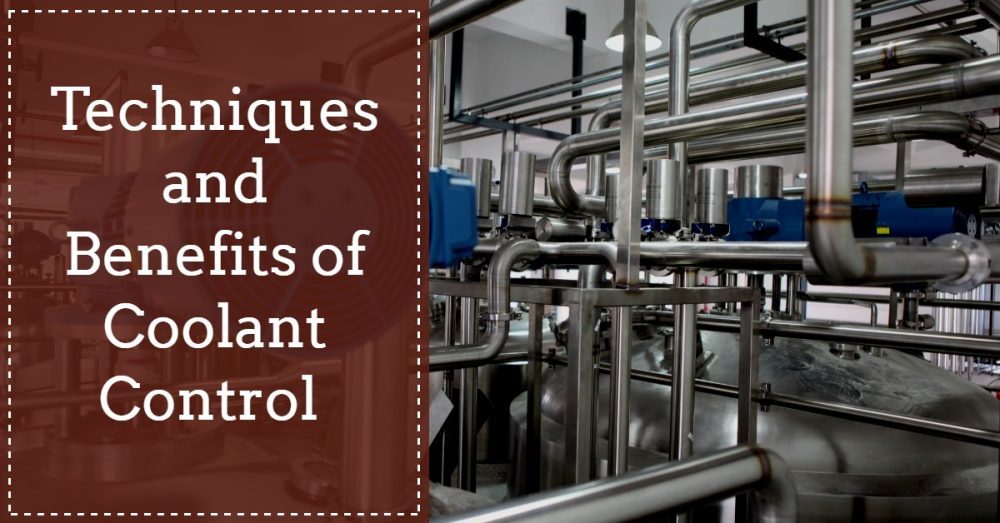When dealing with machinery that uses moving parts, having coolant control systems is important because they prevent friction that can damage these parts. As a user, you can choose from six basic types of liquid flow meters to meet your cooling requirements. All of these coolant control systems have strengths and weaknesses. In this post, we will look at these coolant control systems to help make an informed decision when picking one in your load. Continue reading for more information about liquid flow coolant control systems.
The six types of liquid coolant control systems include:
- Liquid-to-liquid
- Closed-loop dry system
- Closed-loop evaporative system
- Chilled water system
- Open-loop evaporative system
- Closed-loop dry system with trim cooling
Liquid-to-Liquid Coolant Systems
Of all the coolant control systems, the liquid-to-liquid coolant system is the simplest. If you are using well water, a liquid-to-liquid coolant system is ideal for you. This type of coolant system uses well water on one side of an intermediate heat exchanger to cool the compressor. On the other side, a flow switch such as glycol and water is used. Through their intermediate heat exchanger, the heat is exchanged and doesn’t foul the heat exchanger/s. On the well waterside, fouling of the intermediate heat exchanger will probably take place. However, it can be taken apart and cleaned if the intermediate heat exchanger is picked correctly. The plate and frame or shell and tube type are the commonly used IH exchangers. When using a liquid-to-liquid type system, a coolant temp of 5 degrees above the plant cooling “water” is possible. The liquid to liquid coolant system can supply 60 F coolant to the load when the well water is available at 55 F. What makes the liquid to liquid better than other liquid flow meters is that it is less costly to buy and install. This type of coolant control meter can be installed inside or outside the plant.
Closed-Loop Dry Cooling Systems
Just like a radiator in a car, a closed-loop dry cooling system works the same way. In this type of coolant system, heat is transferred from the closed-loop coolant fluid pumped through rows of finned tubes using an air-cooled fluid cooler. In a closed-loop dry cooling system, several parts help to cool the system. These components include the fluid cooler, a fan or fans, the pump and control skid, and the piping system. The closed-loop dry cooling system fluid cooler uses the ambient air and is installed outside to reject heat. When using the closed-loop dry cooling system, it is possible to achieve coolant temperatures of 5 to 10 F above the ambient dry bulb temperature. Since the only parts that use energy are the coolant pump and the fluid cooler fan/s, it is cheaper to use. Thermostats are used to regulate the temperature of the cooling fluid to prevent under or overcooling. The flow switch cooler needs to be cleaned regularly because it operates in a dirty atmospheric site. It is normal for fouling to happen because of leaves, dirt, wood, seeds, etc. The advantage of using the closed-loop dry coolant system is that it is easy to install and use. Energy consumption is very low and can be controlled easily. To maintain this type of coolant system, you only need to regularly check the fluid, inspect the system regularly, and lubricate it. The drawback of using a closed-loop dry coolant system is that it depends on the atmospheric dry bulb. To work efficiently, this type of coolant needs free clear air.
Closed-loop Dry System with Trim Cooling
The difference between closed-loop dry liquid flow meters with a trim cooler and the closed-loop dry system is that a supplemental is added. To give proper coolant temp to the load, the coolant system is used in places where the dry bulb is too high in summer. The user can use a water source to reduce heat to the needed setpoint with an added liquid-to-liquid trim cooler. In many instances, a trim cooler is used to avoid relying on the city water cooler. Since you have reduced the reliance on city water, whose price is on the higher end, using this coolant reduces the amount of wastewater that one needs to dispose of.
Conclusion
It is important to use the right liquid flow meters with the right application since there are many coolant systems. If you are not so sure which water coolant system to use, consult a specialist who will give you guidance on what to consider. By consulting an expert, you make it easy for them to know what is needed in a flow meter.
